
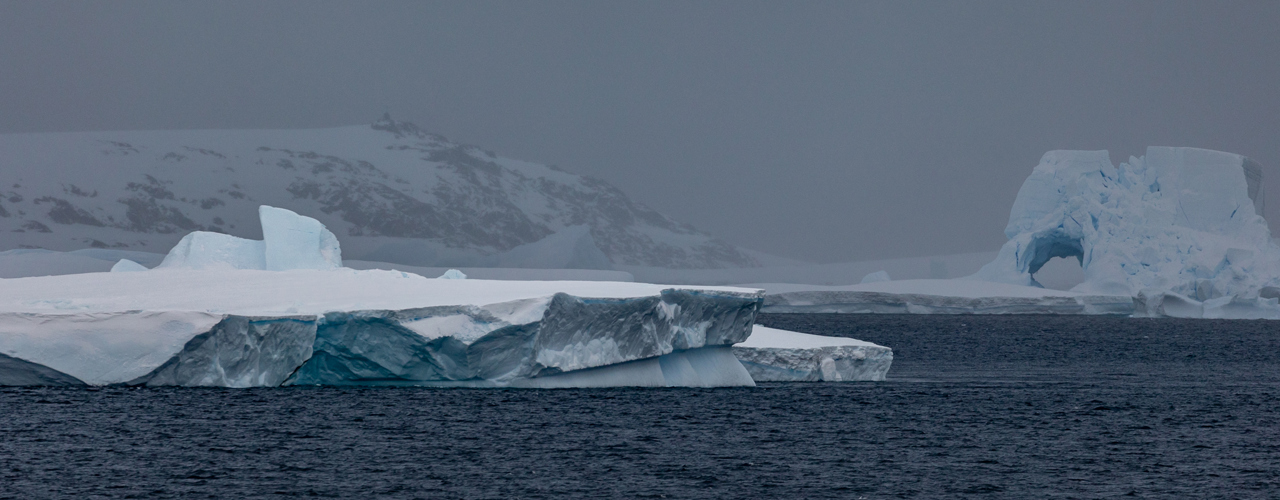
When an NRI Aggie travels to Antarctica
Antarctica is an idyllic land that, for centuries, has drawn explorers to its shores in search of knowledge and renown. More than ever, the effects of climate change are visibly stretching across its vast frozen landscapes, calling out to scientists and climate activists in search for answers with above-average temperatures, melting ice, and rising sea levels.
How do we protect our Earth’s most vulnerable places from the impacts of a changing climate? How can we preserve its natural beauty and resources?
Xenia Rangaswami, a Texas A&M graduate research assistant in our freshwater mussel research lab, recently joined the ClimateForce: Antarctica '22 Expedition (CFA) in search of some of these answers. Over 170 participants from more than 30 countries took part in the CFA immersive learning experience to discuss potential solutions to our climate crisis.
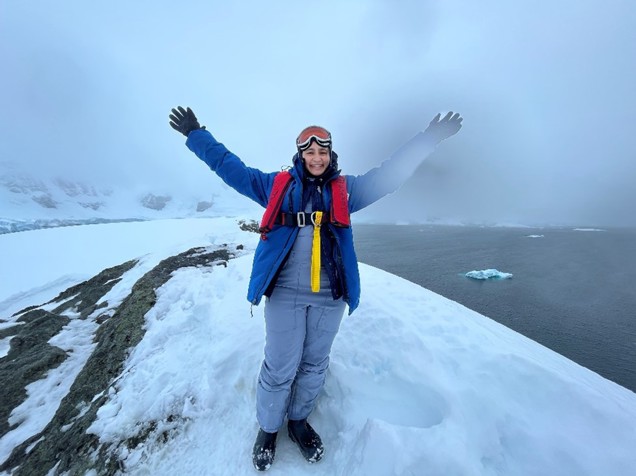
Xenia above Brown Station, Photo courtesy of Xenia Rangaswami
Xenia’s passion for environmentalism began early – she recalled one Earth Week where her fourth-grade homework assignment was to weigh all their household garbage for a week, “I was surprised at how much trash my family produced and convinced my parents to start composting.”
The environment around her was also advocating for itself. Living near an ecological restoration project illustrated for her how quickly native birds and pollinators returned to an area that was properly cared for, and open-water swimming in the grimy, polluted San Francisco Bay sparked her interest in protecting aquatic environments.
She carried on this aquatic focus throughout her undergraduate and now, graduate degrees. During her Organismal Biology undergraduate career at Scripps College in Claremont, California, she researched the metabolism of acorn barnacles in relation to climate change.
Her current freshwater mussel research under Dr. Charles Randklev and Dr. Roel Lopez of the Texas A&M Natural Resources Institute focuses on the thermal and salinity tolerance of native freshwater mussel species in the context of their environmental conditions.
“Basically, I see how hot and how salty the water can get before they can no longer survive. Then, I compare these physiological tolerances to actual conditions in the rivers they inhabit and make recommendations for river management. I enjoy using science as a tool to help conserve vulnerable species.”
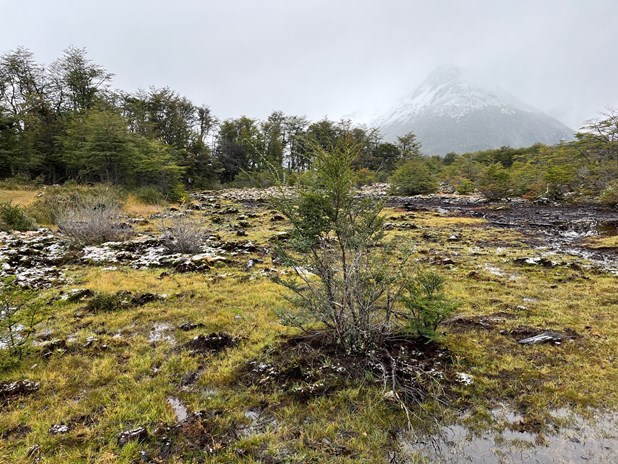
Cerro Alarkén Nature Preserve near Ushuaia, Argentina, Photo courtesy of Xenia Rangaswami
In her senior year of high school in 2015, she traveled on the (then called) International Antarctic Expedition (IAE), and as Xenia puts it, the trip changed the trajectory of her entire life. She said, “After the expedition, I knew I had to dedicate my life to protecting the environment. It affirmed my interest in climate change and motivated me to pursue climate change-related research in college.”
This year, she was invited once again to participate in the latest expedition, led jointly by ClimateForce and the 2041 Foundation. The 2041 Foundation, founded by polar explorer Robert Swan, OBE, is named after the expiration year of the Antarctic Treaty; the treaty prevents any country from owning or exploiting Antarctica’s land and resources. The foundation is advocating for the renewal of the treaty to ensure that Antarctica’s landscapes remain peaceful and accessible for science. ClimateForce, founded by Robert’s son, Barney Swan, is a non-profit that aims to make sustainability accessible in the key areas of lifestyle, education, and business.
In preparation for the trip, Xenia worked with Barney to create actionable steps that CFA members and others can take to make their lives more sustainable.
“One of the popular mottos of the climate movement is ‘think global, act local.’ I really wanted to bring this to life in my work with ClimateForce. I worked with Barney to create a 1-6-1 action-taking framework in which we asked each person on the Expedition to make a 1-month lifestyle commitment, 6-month education commitment, and 1-year business commitment.
I personally committed to 1-month lifestyle goals of reducing my dairy consumption and growing native plants on my patio, 6-month commitment to giving educational talks on Antarctica to schools and other organizations, and 1-year commitment to bringing sustainable initiatives to the AgriLife Dallas Center where I work and my apartment complex. . . I invite other Aggies to join me in making their own commitments!”
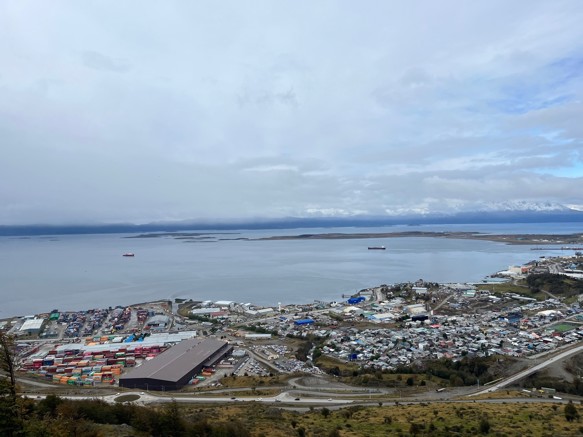
The port in Ushuaia, Argentina, Photo courtesy of Xenia Rangaswami
After departing from Texas, Xenia’s journey truly began in the most southerly city in the world, Ushuaia, Argentina. Because all ships sailing from the Americas to Antarctica depart from Ushuaia, it is nicknamed the “End of the World.” Here, the team explored the peat bogs of the Cerro Alarkén Nature Preserve, hiked the Martial Glacier, and removed trash from the local beach. Peatlands (like the peat bogs of the Nature Preserve) are the largest natural terrestrial carbon store, and damage to these lands is responsible for almost 5% of anthropogenic carbon dioxide emissions globally, and the Martial Glacier, much like many others across the globe, has been steadily shrinking over the last few decades due to rising temperatures. The major impacts of climate change are not limited to Antarctica and before even arriving at their destination, Xenia saw firsthand some of the natural wonders that are being placed at risk if humans do not make significant changes.
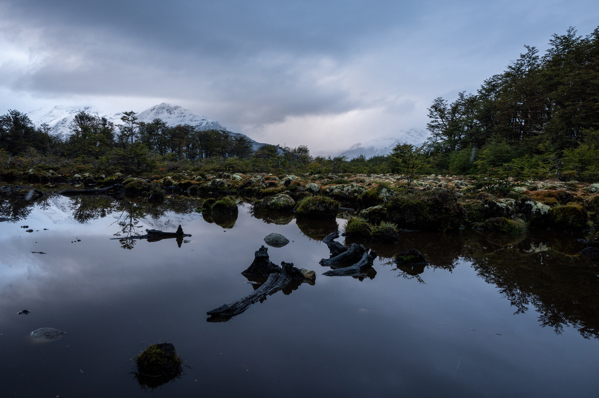
Peat bogs in the Cerro Alarkén Nature Preserve, Photo courtesy of Trenton Branson
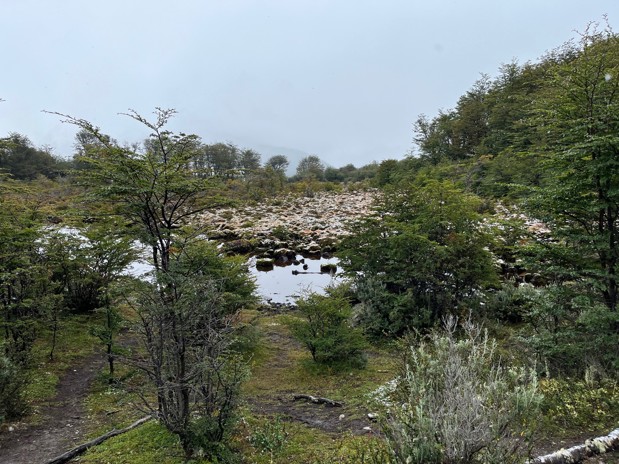
Cerro Alarkén Nature Preserve, Photo courtesy of Xenia Rangaswami
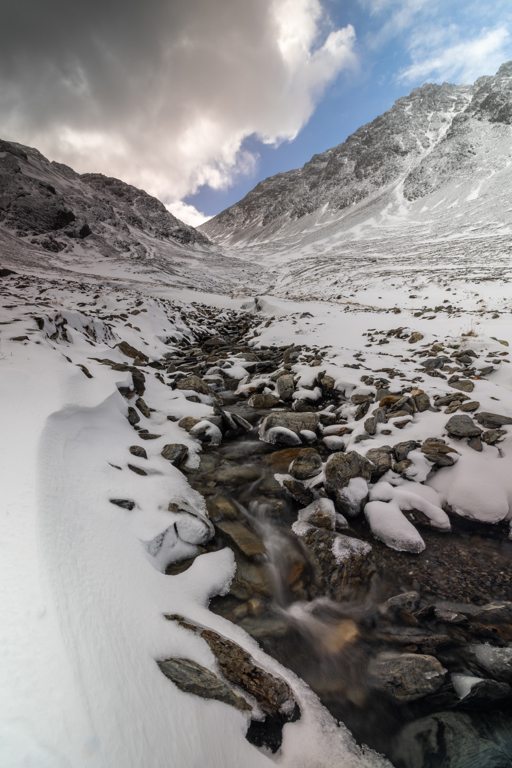
The Martial Glacier, Photo courtesy of Trenton Branson
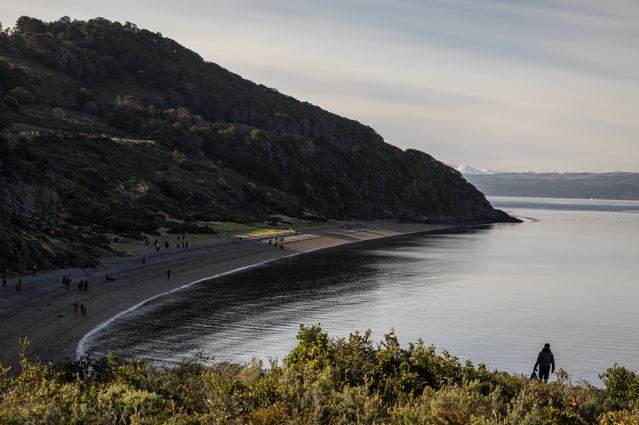
Beach cleanup in Ushuaia, Argentina, Photo courtesy of Trenton Branson
After four days in Ushuaia, Xenia boarded the Ocean Victory and set sail for Antarctica. This vessel is the most environmentally friendly ship that sails to Antarctica and uses 60 percent less energy than traditional cruise ships. The Ocean Victory sailed through the Beagle Channel at the southern tip of South America, across the Drake Passage that connects the Pacific and Atlantic Oceans and can have ocean swells reaching up to 12 meters (nearly 40 feet) high, and finally into Antarctic waters.
For five days the team traveled around the western edge of Antarctica hiking, visiting islands using Zodiac boats, and viewing wildlife like Gentoo penguins (Pygoscelis papua) and Weddell seals (Leptonychotes weddellii). During their time on the boat, they learned from experts and other expedition members about climate change and sustainability.
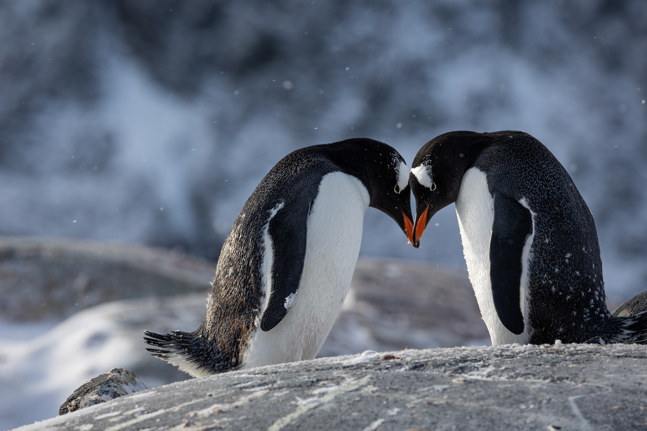
Gentoo penguins, Photo courtesy of Trenton Branson
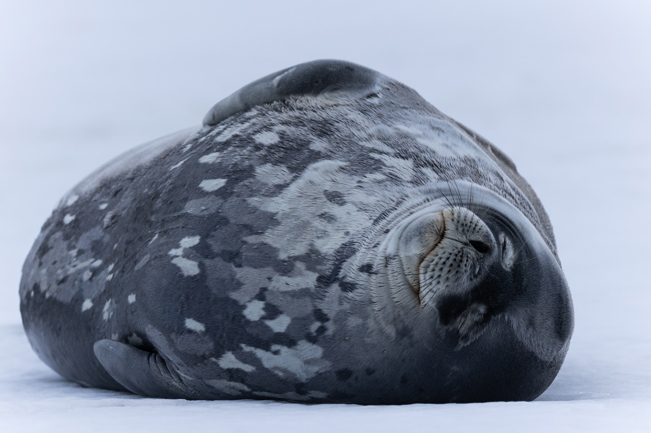
A Weddell seal in Mikkelsen Harbour, Photo courtesy of Trenton Branson
One of the locations the team visited that had the greatest impact on Xenia was Deception Island in Whalers Bay. The island itself is the caldera of a still-active volcano; now a popular tourist destination, it was once home to massive sealing and whaling operations. During the early 19th century, fur-sealers congregated at Deception Island for periods of hunting during summers until overhunting caused seal populations in the area to collapse. In 1904, a whaling industry was established in the area and huge silos were erected to store whale oil after their carcasses were processed. It is said that over a million Antarctic whales were killed in a period of just under 30 years, until the market became less profitable, and the Deception Island factories ceased operating. Although the practice of mass harvesting ended 91 years ago, the silos remain on Deception Island as a reminder of the devastation that was once wrought there and provide inspiration to improve upon our history and continue protecting the land from such widespread exploitation.

Storage silos in Whalers Bay, Photo courtesy of Xenia Rangaswami
As Xenia and the team sailed across the western edge of the continent, they experienced higher than average temperatures. There were several days when they anticipated snow but were instead met with rain. As alarming as this was, the situation was even direr in the eastern reaches of the continent. The remote site known as “Dome C” recorded a daily high temperature of +13.8 °F, a tremendous 69.3 °F higher than the typical average temperature of -55.5 °F. Climate change is impacting our planet in real and tangible ways. Locations like Antarctica that are especially sensitive to temperature changes make it easier to visualize exactly what those impacts are, and it is becoming increasingly crucial for organizations like the 2041 Foundation to continue advocating for its protection.
Xenia shared that her biggest realization on the trip was, “. . . as simple as it sounds, is that there is no one ‘best’ solution to the climate crisis; it must be approached from all angles. This includes top-down, bottom-up, and middle-level approaches. Corporations, governments, communities, and individuals all have a part to play. And it’s especially important for communities to come together in order to create systemic change because we can accomplish a lot more when we act together.”
Being a climate advocate takes many different forms, whether you are advocating for governments and corporations to take responsibility for ecological destruction and pass legislation to reduce greenhouse gas emissions or working in your local community to plant a garden and grow local food to share. “Building resilience within our communities is a crucial part of adapting to a changing climate and regenerating the earth,” said Xenia.
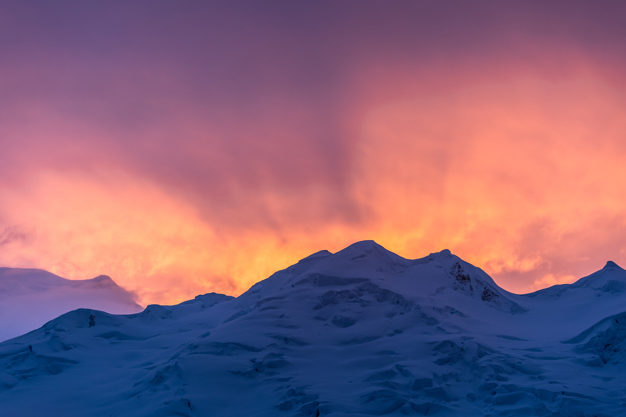
Sunset in Fournier Bay, Photo courtesy of Trenton Branson
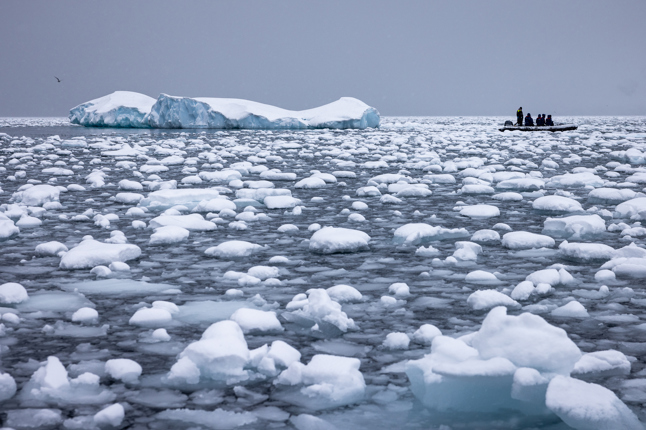
Fournier Bay cruise, Photo courtesy of Trenton Branson
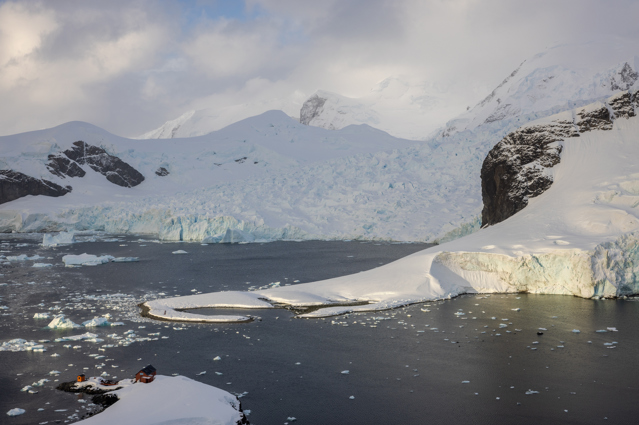
Brown Station, Photo courtesy of Xenia Rangaswami
After the excitement of the expedition fades, the realities of climate change and its direct impact on Texans will remain. Summers with higher-than-average temperatures, droughts, and an uptick in the occurrence of natural disasters are all happening today – how will the missions of organizations like ClimateForce impact Texans through these challenges and aid with the conservation of our wildlife, habitats, and day-to-day lives?
Xenia said, “ClimateForce’s mission is to make sustainability more accessible. It aims to integrate, restore, and connect within lifestyle, education, and business. ‘Integrate’ entails taking action to reduce impact; ‘restore’ incorporates regenerative ventures and . . . environmental, social, and corporate governance; and ‘connect’ brings people together to take climate action. As an ambassador of ClimateForce, I hope to bring its mission to Texas through the lifestyle, education, and business commitments I made during the Expedition and by engaging with the communities I’m part of.”
Many Texans, unfortunately, do not hold the power of governments and corporations to enact widespread change, but organizations such as ClimateForce are meeting people where they are to encourage them to make small, but impactful changes within their own lives and circles of influence. The 1-6-1 framework created by Xenia and Barney is an excellent way to start making small, actionable change and start becoming a climate advocate. When thinking about how she can personally best respond to the climate crisis, Xenia recalled a presentation from her fellow expedition member, Flavia Neves Maia of Brazil, who said, “Privilege is a responsibility, and responsibility is the ability to respond.” The more privilege one is awarded, whether it is financially, socially, or otherwise, the better they can respond to the climate crisis, take meaningful action, and enact change.
The climate crisis is a complex, global issue and as Xenia stated, there is no one correct solution. As one activist travels to Antarctica to learn how she can protect the unique landscapes and life that it harbors, a landowner in Texas may be concerned about droughts and learning new strategies for encouraging native wildlife populations to thrive on her land. Individuals have different interests, strengths, and abilities, and they are all needed to find a solution to the impending effects of climate change. Thinking globally and acting locally is an excellent place to start.
For more information on ClimateForce and how to make a difference in your local community, please visit https://www.theclimateforce.org/.
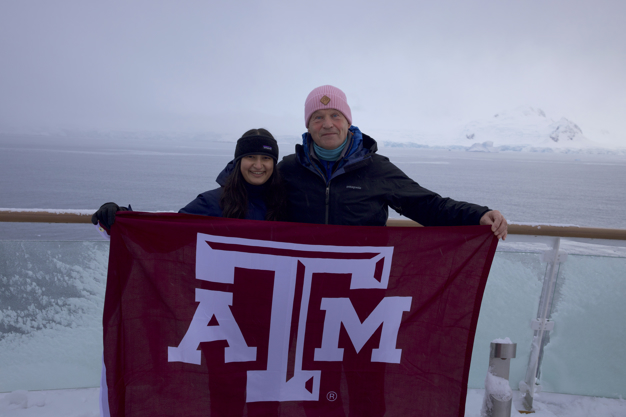
Xenia and Robert Swan holding a Texas A&M flag, Photo courtesy of Xenia Rangaswami
A special thank you to Xenia Rangaswami for answering our questions so thoughtfully. For more information about the 2041 Foundation, please visit https://2041foundation.org/.





